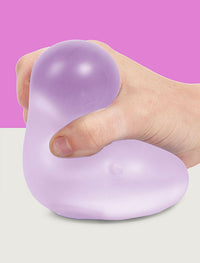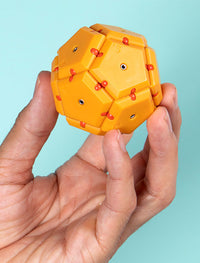Our resident Stresspert, Hilary Jacobs Hendel, is back with tips to self soothe. Both a licensed therapist and award-winning author, Hilary works with clients in techniques that bring them back to the moment to reduce anxiety and stress. You can find free resources on emotions and theChange Triangle tool for emotional health athilaryjacobshendel.com and follow her work onFacebook,Twitter,Instagram andYouTube.
TL;DR:
—
Rebecca was anxious about returning to the office. Bob’s boss was critical of his work. Jennifer inadvertently insulted a colleague who got angry.On any given day we might be triggered by numerous occurrences. Whether we are set off by current events, our boss, our family, a moment of feeling unseen, a biting criticism we receive, or just getting through the daily tasks of life, emotional upset is an unavoidable part of being human.
We cannot stop emotions from happening, they are triggered automatically and without conscious control. However, we can control how we react to our emotions. With knowledge, tools and strategies, we have the power to soothe ourselves.
As anAEDP psychotherapist andemotions educator, I help people in two main ways: 1) by making it safe to process emotions from past traumas and wounds; 2) by teaching tools to better manage emotions as they occur in real time. In general, we feel better when we approach our emotions with a compassionate and curious stance, and then learn to safely name, validate, and focus attention on them until they move through our bodies, the place where emotions live.
Sadly, what we learn in our society is not how to work with our emotions, but how to block and avoid them with numerous creative strategies called defenses. We escape into our heads, leaving our bodies. When the mind thwarts the flow of emotional energy because our feelings overwhelm us or are too conflicting, it puts stress on the mind and the body. Emotional stress, like that from blocked emotions, has not only been linked to anxiety and depression, but also to physical problems like heart disease, intestinal problems, headaches, insomnia and autoimmune disorders.
What helps is two fold. In the long run, we need to process emotions to re-balance our nervous systems. Tools likethe Change Triangle guide us in understanding how our emotions work to cause symptoms like anxiety and depression, when we bury them; or healing, when we tend to them. We have the power to move from disconnected and defended states back to our core emotions and ultimately back to our authentic self.
In the short run, however, we benefit from trying different activities that help calm the nervous system. “State-changers,” as I call them, help shift us out of painful emotional states and moods by calming the mind and body quickly.
Below is a list of some commonstate-changers. Different ones work for different people. You have to find the ones that work for you:
- Grounding your feet on the floor and taking a minimum of 6 deep belly breaths. Watchthis video to practice grounding and breathing with me.
- Taking 6 or moredeep belly breaths.
- Playing with a tactile toy or gadget. A Rubiks cube, stress ball, or Speks magnetic balls, for example, can calm anxiety by bringing us into the present moment and focusing our attention on something non-triggering. Also, tossing these toys back and forth from your left hand to your right hand can also diminish anxiety -something about the left-right movements are calming.
- Swaddling yourself in a blanket to feel held and contained.
- Taking a hot bath or shower.
- Listening to your favorite song.
- Exercising.
- Eating a nutritious snack like nuts or fruit (your blood sugar might be low and contributing to a irritable, anxious, or sad mood)
- Taking a walk outside to connect with nature.
- Tapping on your knees or shoulders, alternating left then right on your body.
- Asking someone you love for ahug.
- Calling a trusted friend to talk about your feelings.
- Lighting a candle with a delicious scent.
- Meditating.
Add you own below:
- ____________________________________
- ____________________________________
- ____________________________________
Through trial and error, you can create a list of the top three that work best for you and put that list on your bulletin board or refrigerator or any place where it’s handy. In moments of distress it is often difficult to think, so having a list of state-changers available to engage in is a good idea. And, remember, don’t waffle about whether to help yourself by going through your state-changer list, just do it, and then see how you feel. You might be surprised.
 Metallic Speks
Metallic Speks Matte Speks
Matte Speks Mini Gump
Mini Gump Jumbo Gump
Jumbo Gump Neutral Crags
Neutral Crags Oil Slick Crags
Oil Slick Crags Chrome Pyramid
Chrome Pyramid Matte Geode
Matte Geode Gift Card
Gift Card